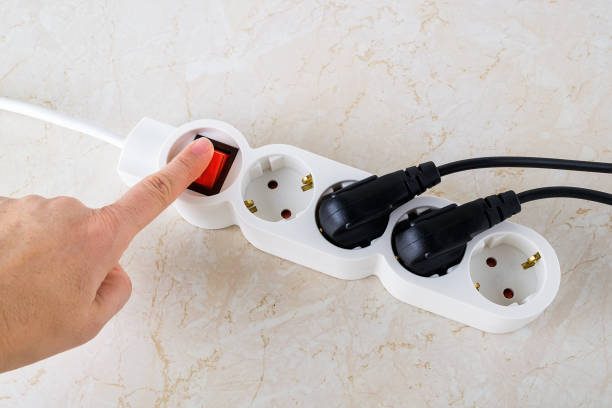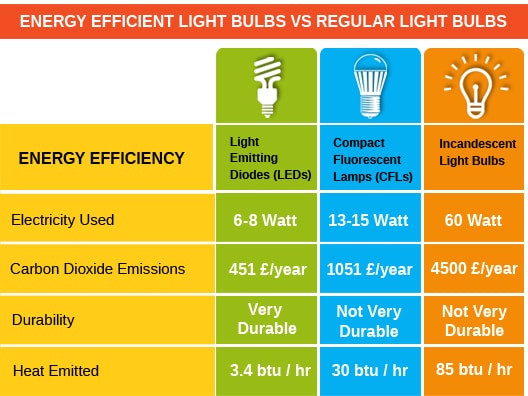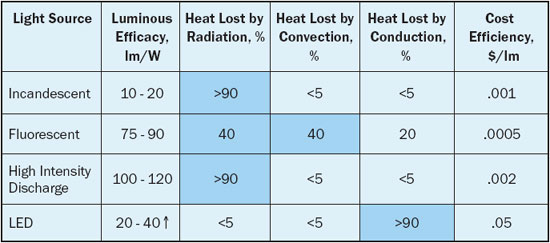
Explore common reasons why LED lights won’t turn on, from faulty wiring and incorrect installations to dead bulbs and power […]

Discover the truth about LED lights and their heat emission. Uncover the science behind ‘Do LED Lights Get Hot?‘ and learn how hot LED bulbs really get.
LED lights have greatly grown in popularity as the consumers’ preferred choice of light. This is mainly due to their eco-friendliness, low energy consumption, and cost-effectiveness. Moreover, LED lights to last longer than the traditional sources of light.
>> You may also want to read; A complete Guide to LED Lights
According to a study published in the journal of “Energy and Buildings“, researchers found that the surface temperature of LED lamps ranged from 30 degrees Celsius to above 70 degrees Celsius, depending on the make and model of the LED light.
>> Also read; 10 Real Benefits Of LED Lights For Your Home And Business
Moreover, the U.S. Department of Energy has provided extensive information about the thermal management of LEDs, stating that the temperature at the junction of an LED should be maintained below a certain threshold to ensure longevity and performance.
LED Brilliance Starts Here, Just $33. Shine Brighter, Save More!
Our Team of Experts Will Guide You Through The ESS Lighting Upgrading Process To Ensure You Achieve The Most Effective Energy Efficient Improvement Possible, GUARANTEED!
A Brighter Home, A Brighter Future!
All these features resulted in very positive feedback from LED customers, which encouraged other consumers to make the switch away from halogen and other traditional light sources towards LED bulbs.
This rise in popularity has also resulted in a lot of myths and misconceptions about LED lights, making it all the more important for users to understand and learn about the details of LED bulbs before making the switch.
>> Also read; LED Light Replacement And its Benefits
This article will tackle one growing concern for many users wondering whether LED lights get hot or not. Let’s find out!
One of the most popular misconceptions regarding LED light operation is that they do not emit any heat. This is not true, as LED lights, like all light sources, produce heat.
So, LED lights do get hot.
The major difference regarding LED lights which leads to this misconception is that LED technology allows for significantly reduced heat emissions.
Also read; LED Light Replacement And its Benefits
Upon touching the lamp, you may notice that the lamp is cool, leading you to assume that the lamp doesn’t produce any heat. This is actually because the heat produced is accumulated inside the lamp.
To better tackle this question, we’ll explain next how LED lights work and why you can’t feel the heat upon touching the lamp.
LED lights are commonly known for being more energy-efficient than halogen or fluorescent lights.

This is due to the amount of consumed energy that is transformed into light compared to the amount required by other sources, for the same light output.
The energy consumed by any light fixture is dissipated in 2 ways. One way is to emit light and light up spaces, while the other is emitted as heat, resulting from the operation of the light bulb.
Some light sources transform their energy into infrared radiation, which causes these light sources to emit a lot of heat. Most LED lights, on the other hand, do not produce infrared radiation.
As such, only small amounts of heat are emitted along with the light energy during the operation of LED lights, which is what makes LEDs energy efficient.
The majority of energy-efficient LED lights can convert up to 80% of the energy consumed into light energy.
>> Also read; Benefits of LED Lights Over Traditional Lighting
Even the most energy-efficient LED light produces some amount of heat. Though, what sets these lights apart from other sources is the technology through which LEDs release the heat.
If you ever inspect an LED light bulb, you will probably notice white ceramic sections on the equipment. This is the heat sink. The heat sink is the section of the LED bulb that is designed to remove heat from your lamp and release it.
As LED lights produce less energy, the heat sink has to release a smaller amount of hot air. You should, however, note that the heat sink gets quite hot, so make sure not to touch it when the lights are on.
Moreover, the quality of the heat sink makes a big difference, as it determines the speed and rate at which heat is emitted from the lamp.
The design of the LED bulb and the type of materials it is made of are also key factors when it comes to the amount of heat it is can release to the surroundings.
One of the most crucial parts of LED light is the diode, and even the slightest irregularity in its structure will make your lamp produce large amounts of heat.
The materials used in the production of the diode also affect the amount of heat it emits.
The diode is the part responsible for emitting light energy. It is the part that consumes the electric current, to turn 80% of the energy to light, and the rest to heat.
For LEDs to be more energy-efficient and produce the light output required, the quality of the diode, its materials, and the installation method is all very important.
Always choose manufacturers that use the highest quality diodes when looking at LED options.
The position of the LED light bulb in your house can have a significant impact on the heat produced. LED bulbs positioned in an up or down method tend to emit much less heat.
If your space requires sideway positioning of your LED light bulbs, then make sure that the operating temperatures are within normal ranges.
The energy efficiency and low levels of heat production are the main reasons why LED lights have longer lifespans than traditional light sources.
The internal heat produced by all light sources, or the junction temperature, causes the dimming or malfunctioning light bulbs. This very reason ends their operating lifetime.
Also read; 11 Reasons Why Your LED Lights Flicker And How To Fix Them?
Traditional light sources with high junction temperatures aren’t able to lower the internal heat produced. Therefore, they suffer from shorter lifespans.
>> Also read; What Color LED Light Helps You Sleep Well?
The heat sink built into LED lights, on the other hand, regulates the amount of heat released. This heat is already lower, maintaining a low junction temperature.
The high internal heat slowly affects the light structure and creates damage to the equipment. Hence, most of the lights lose their ability to function because of heat damage.
The lower heat produced internally in LED lights reduces the rate of damage. This gives LED lights a much longer lifespan compared to traditional light sources, almost 5 times greater.
Additionally, once past their mentioned lifetimes in the product description, LED lights can still function for many more operating hours. However, the light output will slowly deteriorate and dim down.
>> Also read; 9 Commercial Applications Of LED Lights
LED lights are known for being much more energy-efficient and having a lower heat output compared to traditional incandescent bulbs. Here’s a detailed look at the heat generation of LED bulbs:
LED lights do get hot, but at a much lower rate than traditional light sources.

The heat they release is often undetectable. This is because the amount of heat released is minimal, confusing users on the heat production of LED lights.
The amount of heat the equipment produces is maintained internally. So, you can’t feel the heat when touching the bulb.
This safety feature is a great additional benefit of LED lights. Now, that adds more reasons to the long list of benefits to be gained from an LED upgrade.
You may also want to read: Do LED Bulbs Attract Insects and Bugs?
Swap out those tired, old commercial lights for our state-of-the-art LED Panels . Not only will you be illuminating your workspace with optimal precision and quality, but you’ll also be waving goodbye to sky-high energy costs! Savings of UP TO A STAGGERING 80% on your lighting expenses!
But, we’re not stopping there! To make the deal even sweeter, we’re offering an EXCLUSIVE DISCOUNT on your LED lighting upgrade.